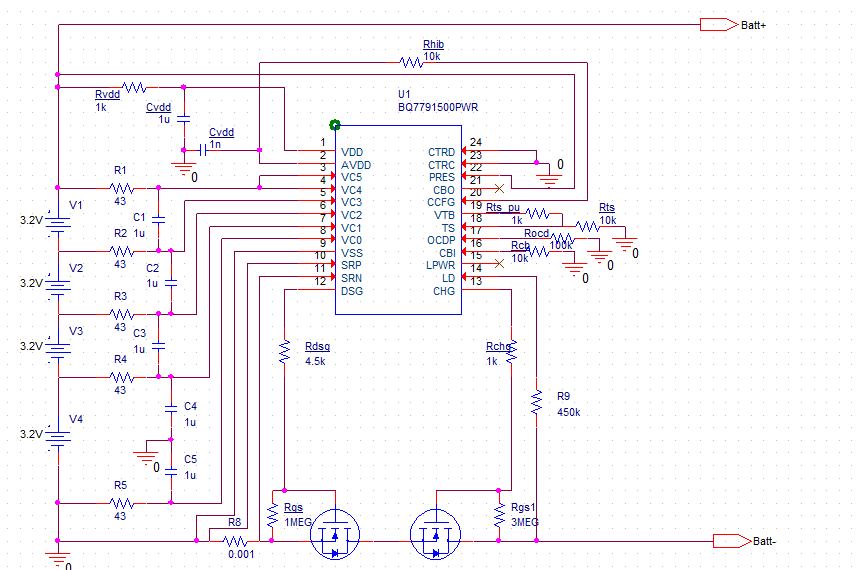Dear Community
Hi! I am working on building schematics for my BMS which will be connected to 4*LFP batteries in series (total 12.8~14.4V/3A)
my output current is tageted to have 4~8Ah discharge rate but i am having trouble with choosing CHG and DSG transistor values.
I randomly chose some transistors for filling up the blank but i need help with finding proper FET and check if my schematic looks reasonable.
Can you guys help me with this? Thank you!



